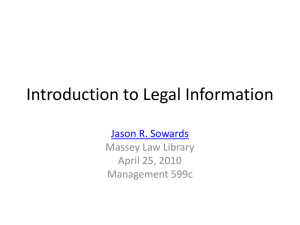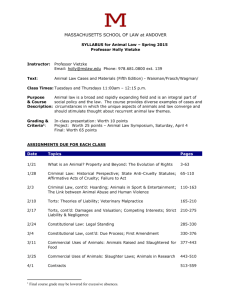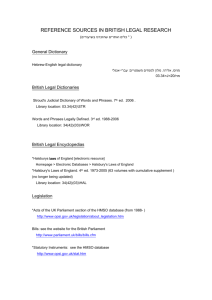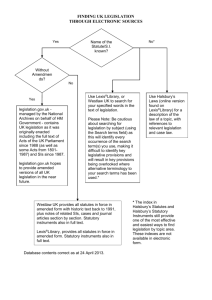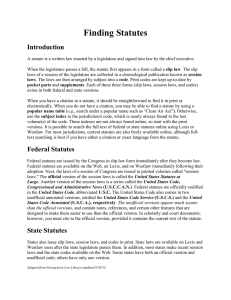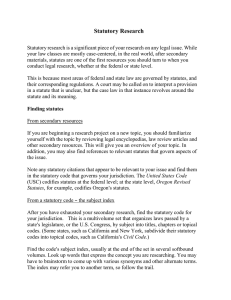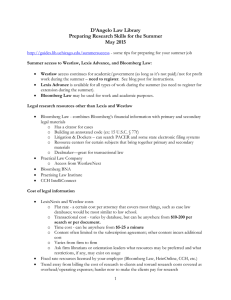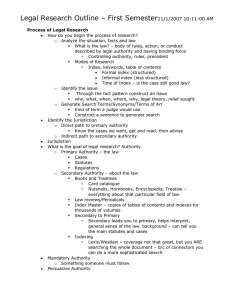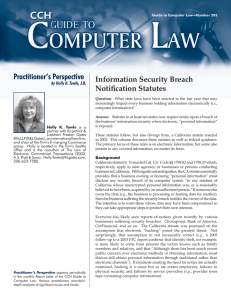legal research strategy - University of Baltimore School of Law
advertisement
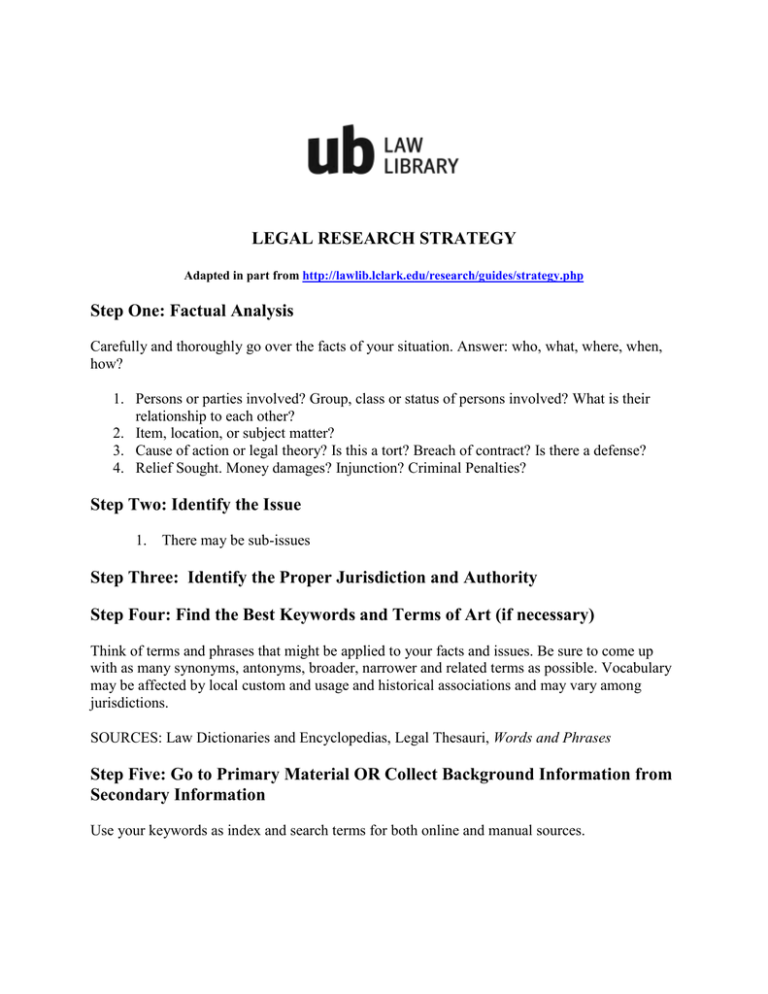
LEGAL RESEARCH STRATEGY Adapted in part from http://lawlib.lclark.edu/research/guides/strategy.php Step One: Factual Analysis Carefully and thoroughly go over the facts of your situation. Answer: who, what, where, when, how? 1. Persons or parties involved? Group, class or status of persons involved? What is their relationship to each other? 2. Item, location, or subject matter? 3. Cause of action or legal theory? Is this a tort? Breach of contract? Is there a defense? 4. Relief Sought. Money damages? Injunction? Criminal Penalties? Step Two: Identify the Issue 1. There may be sub-issues Step Three: Identify the Proper Jurisdiction and Authority Step Four: Find the Best Keywords and Terms of Art (if necessary) Think of terms and phrases that might be applied to your facts and issues. Be sure to come up with as many synonyms, antonyms, broader, narrower and related terms as possible. Vocabulary may be affected by local custom and usage and historical associations and may vary among jurisdictions. SOURCES: Law Dictionaries and Encyclopedias, Legal Thesauri, Words and Phrases Step Five: Go to Primary Material OR Collect Background Information from Secondary Information Use your keywords as index and search terms for both online and manual sources. SOURCES: 1. Legal Encyclopedias ----- AmJur2d, CJS, ALR, state encyclopedias. 2. Law Review articles ----- HeinOnline, LegalTrac, ILPB 3. Treatises --- Online Catalog, ALR's, Restatements, Hornbooks, Nutshells, multi-volume texts. 4. Looseleaf Services ----- CCH, BNA 5. Practice Materials ----- CLE's, Practice Manuals, Formbooks Step Six : SEARCH FOR AUTHORITY Look for primary authority first. If no luck, try and find persuasive authority. 1. Ask: Is there a STATUTE on point? SOURCES: Statutes at Large, USCCAN, USC, USCA, USCS, State Statutes 2. If so, are there also ADMINISTRATIVE REGULATIONS? SOURCES: CFR, Federal Register, State Administrative Rules and Regs 3. If there are no annotations to statutes on point, try a Legislative History. SOURCES: USCCAAN, ProQuest Congressional 4. Ask: Are there CASES on point? SOURCES: West's Digest System, LexisNexis, Westlaw, Bloomberg 5. Find an applicable Topic and Key Number in the Digest system, look for primary authority. If none, check for persuasive authority. Step Seven: RE-EVALUATE AND RE-ANALYZE THE ISSUES In the course of your research you may have come across a new issue. Go back and see if you missed anything after you became familiar with the area of law. Does it all make sense? How much more time and money can be spent on the issue. Step Eight: UPDATE AND VERIFY AUTHORITY SOURCES: Shepard's on LexisNexis; KeyCite on Westlaw, Bloomberg Citator Step Eight: CONCLUDING YOUR RESEARCH Did you answer the question you started with? Have you checked and updated all the sources you used and cited? Are you seeing the same sources every time you attempt to do further research? If you do you are probably finished, especially if your deadline is approaching. If you are not sure – stop by and chat with one of the research librarians to make sure you didn’t overlook any sources – contact us at lawlibref@ubalt.edu Don’t forget your other options and tools for research: One Good Case Rule/Key Numbers/Annotated Statutes/Docket Information A. Postar University of Baltimore School of Law, 2015
